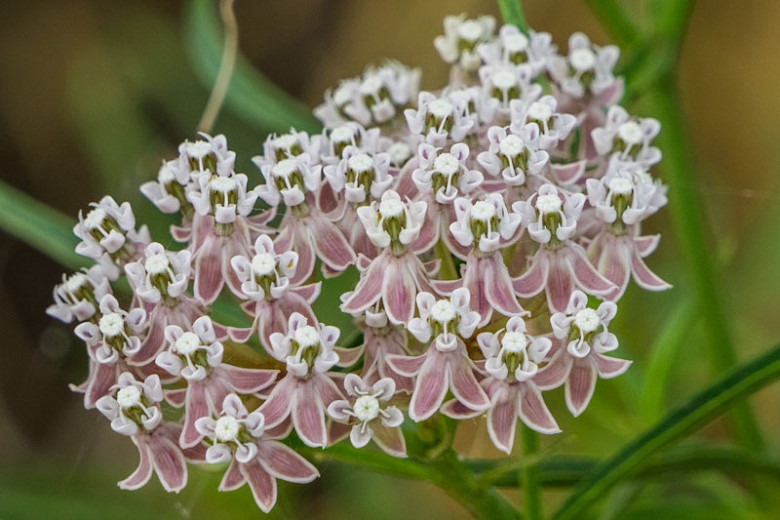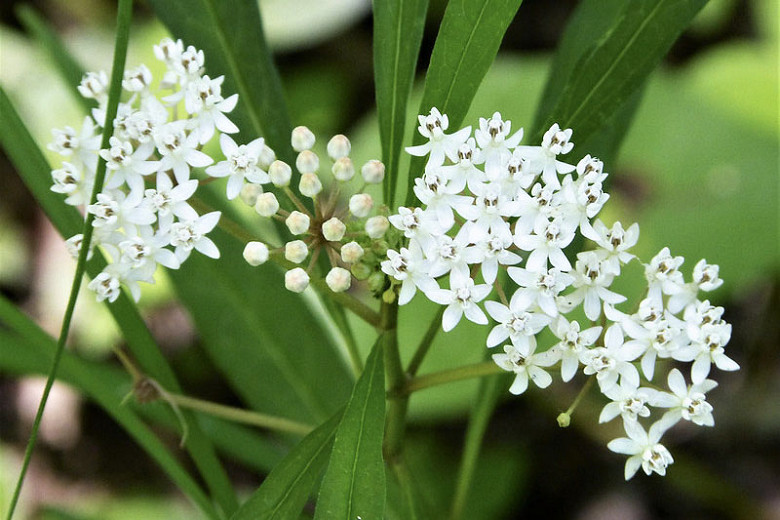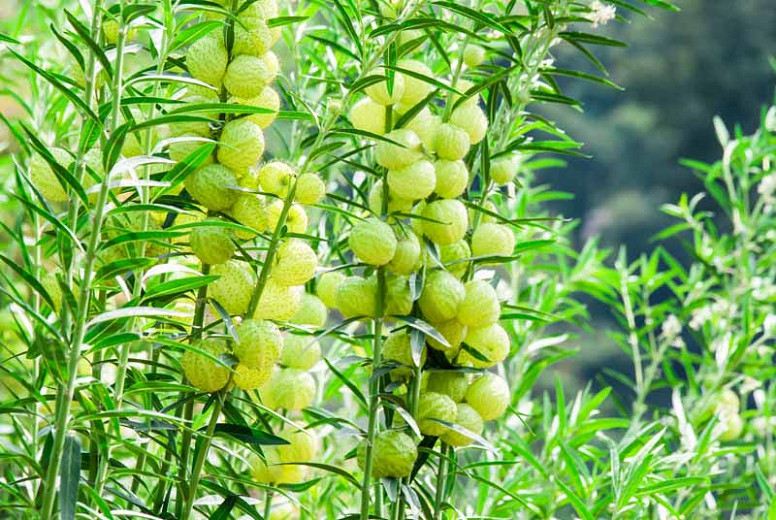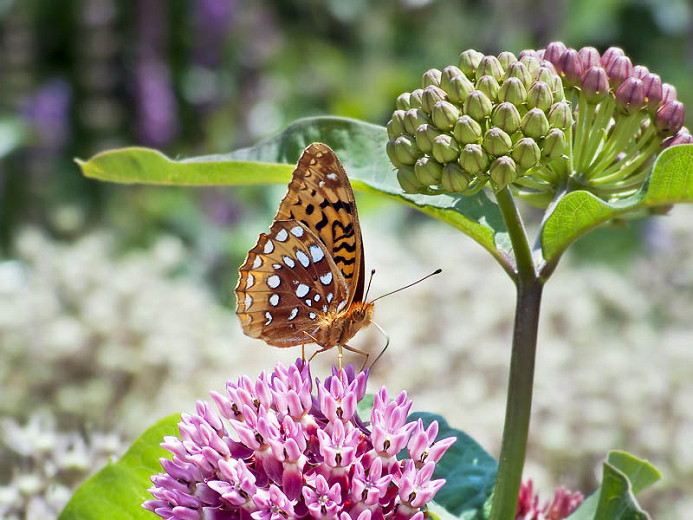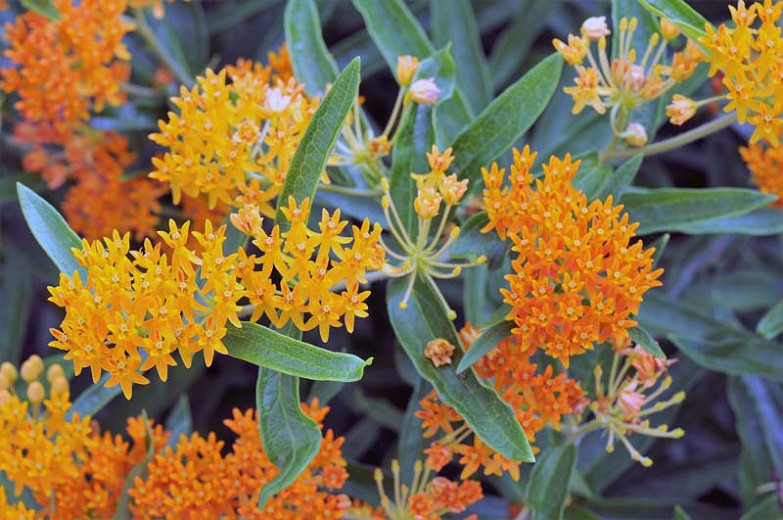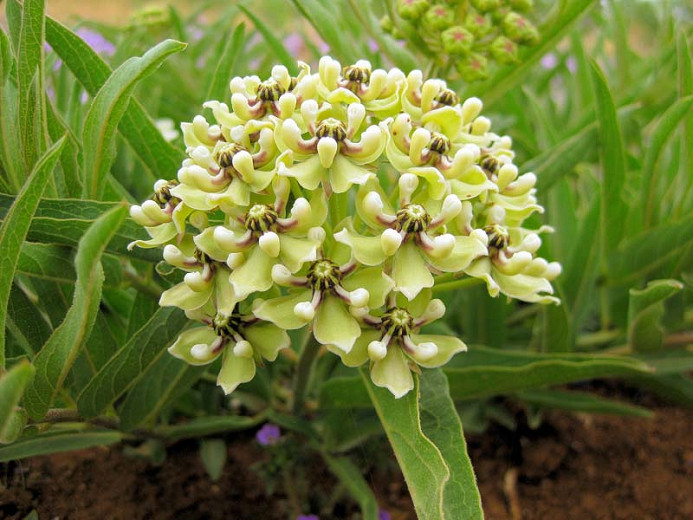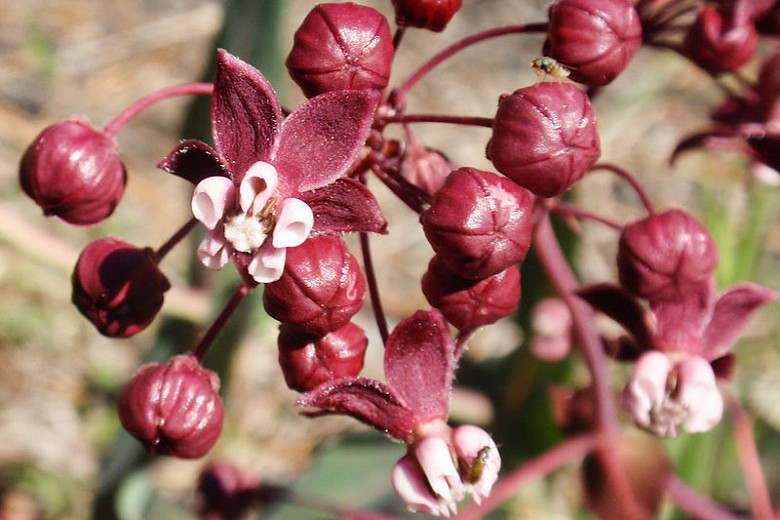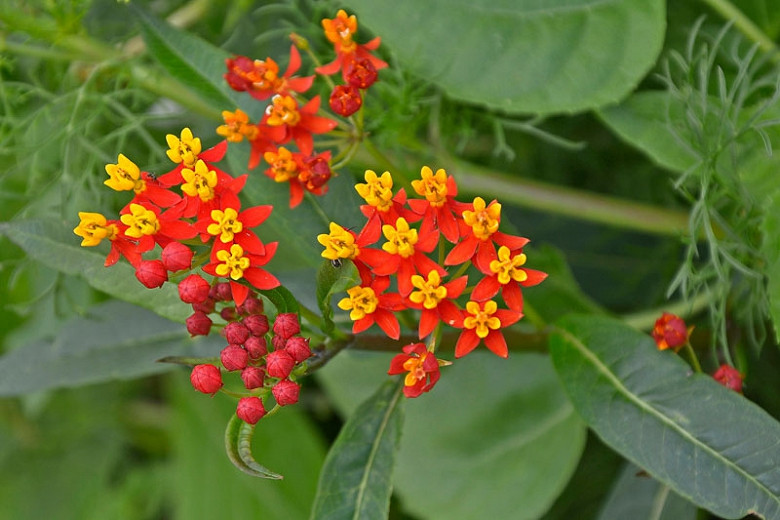Asclepias fascicularis (Narrowleaf Milkweed)
Asclepias fascicularis (Narrowleaf Milkweed) is a flowering perennial boasting attractive clusters, 4-5 in. across (10-12 cm), of lavender and white, starry flowers from early summer to fall. Flowers are a great source of nectar for butterflies, hummingbirds, bees, and other beneficial insects. The blooms occur on upright thin stems clad with long, narrow, pointed leaves. They give way to smooth seed pods in the fall, which look great in dried flower arrangements. When the seed pods open, they reveal seeds with long, silvery-white, silky hairs. Adaptable to high or low water, heat, and all types of soils (including clay), this is one of the easiest and fastest milkweeds to establish – A great choice for the flower garden and for natural settings. Milkweed plants are critical to monarch butterflies' survival, whose population in North America has plummeted by 90% in the last 20 years. By planting milkweed in your own garden, you can help reverse the fortune of these beautiful insects!
- Grows up to 1-3 ft. tall (30-90 cm) and 12 in. wide (30 cm). May self-seed if seed pods are not removed prior to splitting open.
- Thrives in full sun in dry to medium well-drained soils. Does well in poor, dry, gravelly soils. Drought tolerant.
- Low maintenance, this perennial plant is generally pest and disease free. Deer resistant.
- Perfect for sunny borders, cottage gardens, butterfly gardens, and prairies or naturalized areas.
- Milkweeds contain cardiac glycosides, naturally occurring drugs that increase the force of heart contraction and have been used to treat heart conditions. The cardiac glycosides are potentially poisonous to humans. But they pose the most danger to grazing animals. However, it should be noted that not all milkweed species are equally toxic. Among the most toxic are Asclepias labriformis (Labriform Milkweed), Asclepias subverticillata (Western Whorled Milkweed), Asclepias eriocarpa (Woolypod Milkweed) and Asclepias fascicularis (Mexican Whorled Milkweed).
- Toxic to dogs, toxic to cats, toxic to horses.
- Native to North America
Requirements
| Hardiness | 6 – 10 |
|---|---|
| Climate Zones | 3, 3A, 3B, 7, 8, 9, 10, 14, 15, 16, 17, 18, 19, 20, 21, 22, 23, 24 |
| Plant Type | Perennials |
| Plant Family | Asclepias |
| Exposure | Full Sun |
| Season of Interest | Summer (Early,Mid,Late)Fall |
| Height | 1' – 3' (30cm – 90cm) |
| Spread | 9" – 1' (22cm – 30cm) |
| Spacing | 12″ (30cm) |
| Water Needs | Low, Average |
| Maintenance | Low |
| Soil Type | Chalk, Clay, Loam, Sand |
| Soil pH | Acid, Alkaline, Neutral |
| Soil Drainage | Well-Drained |
| Characteristics | Showy |
| Native Plants | United States, California, Pacific Northwest, Idaho, Oregon, Washington, Rocky Mountains, Utah, Southwest, Nevada |
| Tolerance | Deer, Drought, Dry Soil, Rocky Soil |
| Attracts | Bees, Butterflies |
| Garden Styles | Informal and Cottage, Prairie and Meadow |
